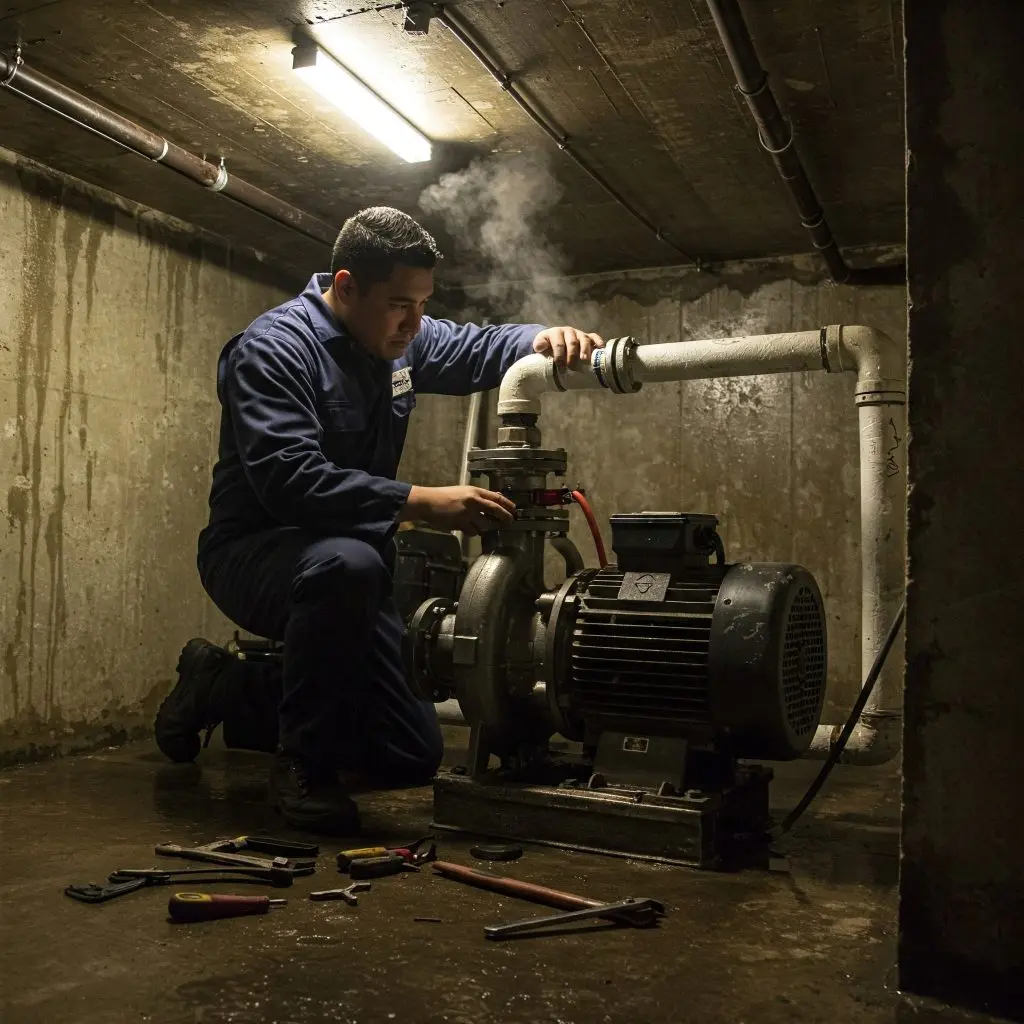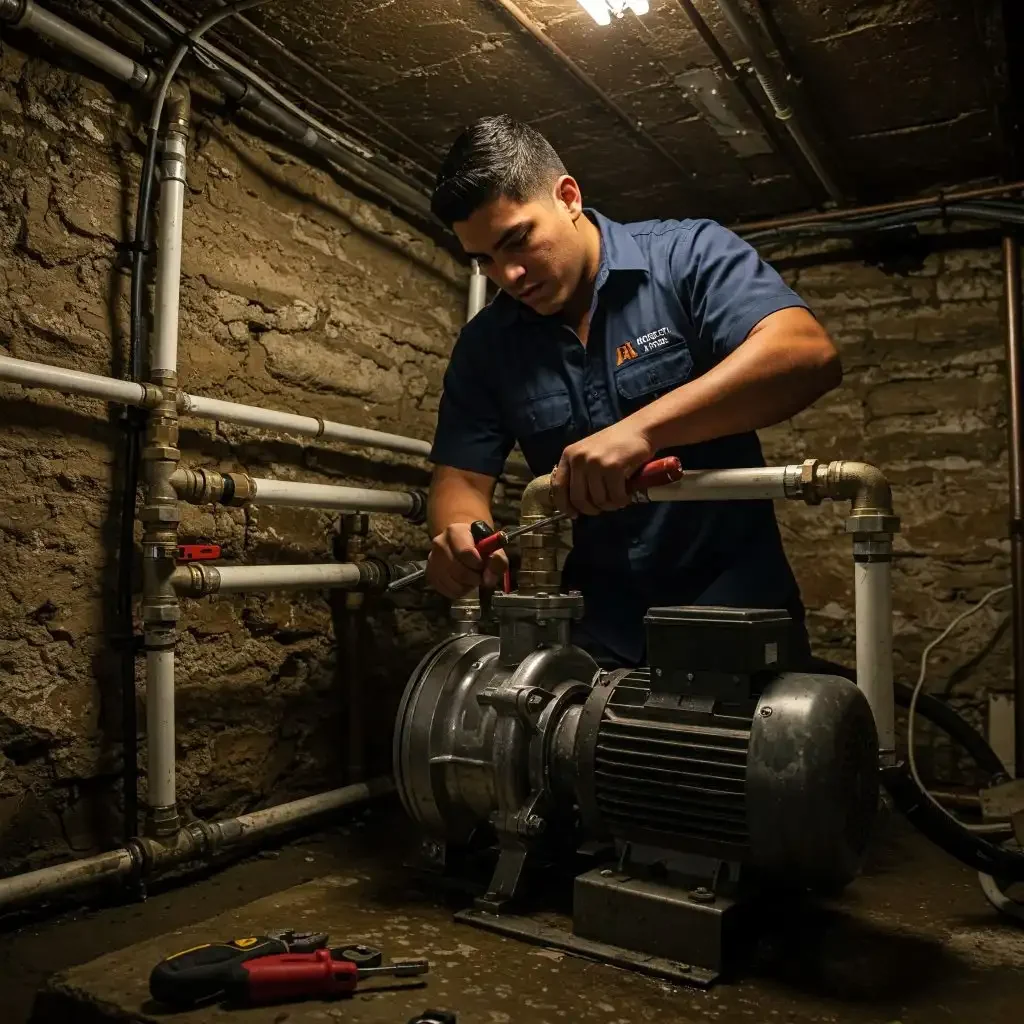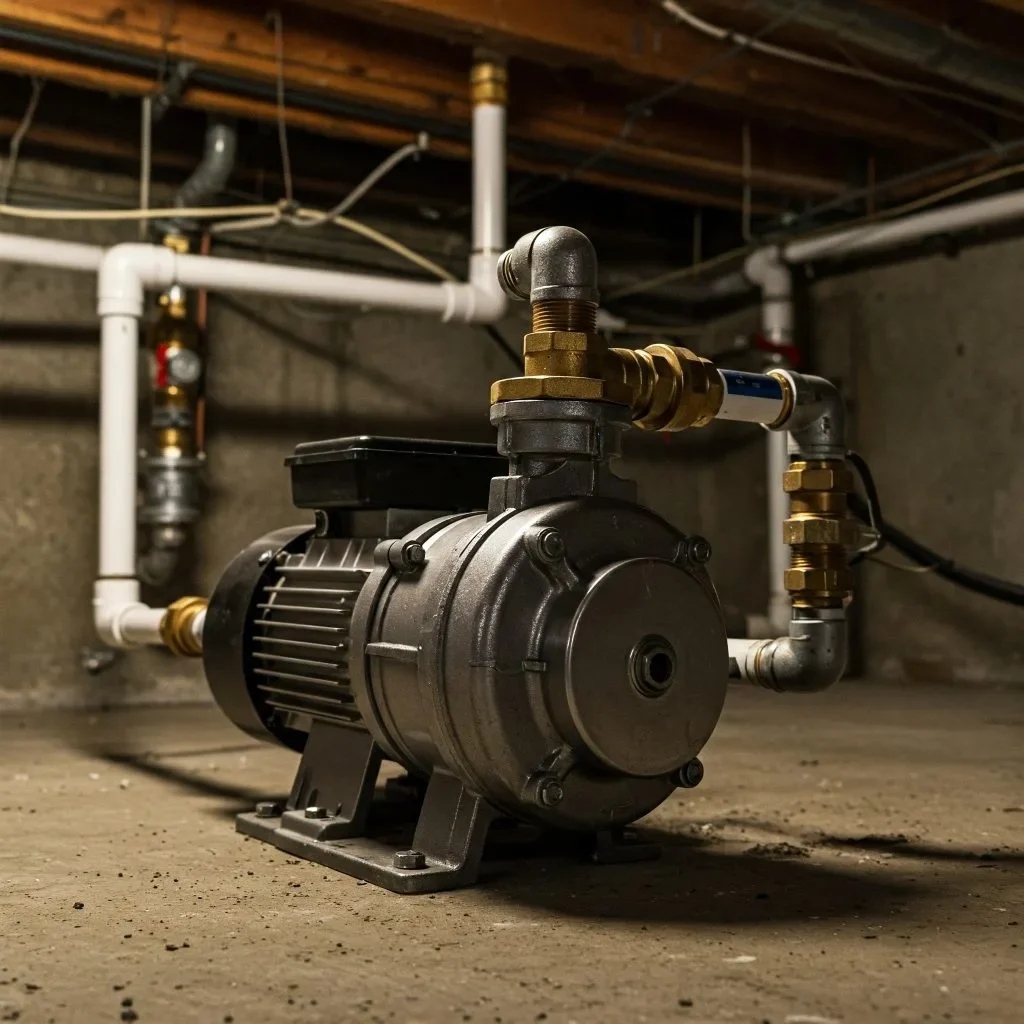الشحن مجاني لكافة الطلبات فوق ال 2000 ريال في السعودية

Causes of Low Water Pressure and Effective Solutions
- not only pumps
- May 15, 2025
- 3:06 pm
Table of Contents
Water pressure is a crucial element in every home and facility, ensuring a continuous and efficient flow of water for daily uses—from drinking and showering to running household appliances and irrigation systems. However, many people face the issue of low water pressure, which results in weak flow, delays in filling tanks, and difficulty operating devices that require strong water pressure. If you’re experiencing this problem, there’s no need to worry! In this article, we’ll explore the most common causes of low water pressure and show you how to solve them with simple and effective steps. Keep reading to discover the solutions that will ensure a strong, uninterrupted water flow in your home or business
Why Is Your Water Pressure Low? Common Causes Behind the Issue
Many people experience low water pressure in their homes or facilities, which can significantly impact daily comfort and the efficiency of water-dependent appliances. But what causes this issue? There are several reasons behind weak water flow, and each one requires a different solution. Let’s look at the most common causes of low water pressure:
1. Low Pressure in the Public Water Supply
Sometimes, the issue stems from a drop in pressure from the main water supply, such as the public water network. This can happen due to routine maintenance or faults in the network, resulting in a weak water flow to homes and buildings.

1. Low Pressure in the Public Water Supply
Sometimes, the issue stems from a drop in pressure from the main water supply, such as the public water network. This can happen due to routine maintenance or faults in the network, resulting in a weak water flow to homes and buildings.
2. Blocked or Clogged Pipes
The buildup of limescale or rust inside pipes can cause partial or complete blockages, reducing water flow. This is a common issue, especially in old piping systems or pipes that are not cleaned regularly.
3. Leaks in the Water System
Hidden or visible leaks in the piping system can lead to significant water loss and a drop in pressure. Often, leaks are not immediately noticeable and require specialized equipment to detect and fix.
4. Pump Malfunction
If the water pump is not working efficiently, it can result in low pressure. This may be caused by air leakage into the pump or mechanical issues such as worn-out internal components.
5. Faulty or Improperly Opened Valves
Damaged or partially closed valves can restrict water flow. Sometimes, valves are not fully opened or are malfunctioning, which limits the amount of water flowing through the system.
6. Pipes with Small Diameter
Using pipes that are too narrow can reduce water volume and cause weak pressure. In some cases, the installed piping may not match the actual requirements of the water system, leading to poor water flow.
Identifying the cause of low water pressure is the first step toward solving the problem, as it helps determine the appropriate solution. In the next sections, we’ll cover practical fixes to these common issues so you can restore strong and reliable water pressure in your property.
How to Fix Low Water Pressure: Practical and Effective Solutions
To solve the issue of low water pressure, you can apply various effective solutions depending on the root cause. Here are the key remedies that can restore your system’s water pressure:
1. Check the Water Pressure from the Main Source
If the pressure is low from the main supply, consider installing a pressure booster pump. These pumps effectively increase the pressure in your water system. Make sure to choose a pump that suits your specific needs for consistent water flow.
2. Clean Clogged Pipes
Limescale and rust buildup can clog pipes and reduce flow. Regular pipe cleaning using specialized descaling products—or hiring professionals—ensures your piping system remains clean and efficient.
3. Fix Leaks in the Water Network
Leaks in the piping system cause water loss and pressure drops. Detect and repair any leaks promptly—whether visible or hidden—using modern leak detection techniques to prevent further issues.
4. Service or Replace the Pump
If the pump is the source of the problem, it may need maintenance or replacement. Choose a high-performance, energy-efficient pump to restore strong and steady water pressure.
5. Inspect Valves and Faucets
Partially closed or faulty valves can limit water flow. Ensure all valves are functioning properly and fully open to allow optimal water movement through the system.
6. Replace Undersized Pipes
Narrow pipes may be the reason behind low pressure. Replacing them with larger-diameter pipes improves water flow and ensures adequate pressure reaches all parts of the system.
By following these solutions, you can address low water pressure effectively and ensure a continuous, high-performance water supply.
How to Know When It’s Time to Replace Your Pump: Warning Signs to Watch For
When dealing with water pressure problems, your pump might be the root cause. But how do you know if it needs replacing? Here are key warning signs that indicate your pump may have reached the end of its life:

- Sudden or Ongoing Pressure Drop:
If your water pressure drops significantly—gradually or suddenly—this could signal internal damage or inefficiency in your pump. - Unusual Noises:
Strange sounds like buzzing, banging, or rattling can indicate internal wear and tear or failing components inside the pump. - Overheating:
If the pump gets excessively hot during operation, it may indicate motor problems or internal malfunctions. Overheating can lead to irreversible damage if not addressed promptly. - Water Leakage:
Leaks around the pump area may point to seal damage or other internal issues. Persistent leaks often mean the pump needs replacement. - Inefficiency or Inconsistent Water Flow:
If the pump fails to deliver water at the required pressure or works irregularly, it may be beyond repair. - Pump Age:
Every pump has a limited lifespan. Frequent issues in an old pump often signal it’s time for an upgrade.
Monitoring these indicators can help you make a timely decision to replace your pump before more serious problems occur.
Repairing an Old Pump vs. Buying a New One: Which Is the Better Choice?
When facing pump-related issues, you may need to choose between repairing your existing pump or purchasing a new one. Each option has pros and cons, depending on factors like the pump’s age, repair costs, and system performance. Here’s a comparison to help you decide:
| Buying a New Pump | Repairing an Old Pump | Factor |
| Higher upfront cost | Lower if repairs are minor | Cost |
| Longer due to new and reliable components | Shorter, especially for older pumps | Lifespan |
| High efficiency with advanced technology | May be reduced due to wear | Efficiency |
| Fewer problems, lower future costs | Issues may persist with older models | Future Reliability |
| Better long-term reliability | May require frequent maintenance | Sustainability |
| Includes smart pressure control, energy-saving features | Lacks smart features and upgrades | Modern Features |
| Comes with warranty and professional service | Requires skilled technician | Support |
Whatever your choice, Advanced Pumps Company (NOP) offers the perfect solution—whether you’re repairing or upgrading. We provide expert consultations and top-quality installation services to ensure optimal pump performance and long-term system reliability
Choosing the Ideal Pump to Boost Water Pressure in Your Home
When it comes to improving water pressure at home, selecting the right pump is essential. At Advanced Pumps Company (NOP), we offer a wide range of pumps tailored to both residential and commercial needs, ensuring an efficient and sustainable solution for your water system.
Types of Pumps We Offer:
- Residential Water Pumps
Designed to enhance water pressure in small to medium-sized homes, these pumps improve flow across faucets, showers, and other fixtures. - Pressure Booster Pumps
Ideal for homes suffering from low supply pressure, these pumps deliver consistent water flow throughout the entire house. - Centrifugal Pumps
Perfect for larger buildings and commercial projects, our centrifugal pumps provide high-volume, high-pressure performance. - Firefighting Pumps
Ensure safety with high-efficiency fire pumps that maintain strong pressure in emergency fire suppression systems. - Multistage Pumps
Suitable for pumping water at high pressure over long distances or across multi-story buildings. These pumps offer continuous, powerful water flow.
With NOP, you receive professional guidance to help you choose the best pump for your specific needs. We also provide high-quality supply and installation services to guarantee sustainable performance.
Conclusion
Choosing the right pump to boost your home’s water pressure is a vital step toward ensuring comfort and long-term water system sustainability. Whether you need a household pressure booster or a high-capacity fire pump, Advanced Pumps Company (NOP) offers a wide range of innovative, reliable solutions to meet all your needs.
Contact us today for a free professional consultation and let us help you select the best system for your home or business. Reach us via WhatsApp or on Instagram.
At NOP, we’re committed to delivering top-quality service and powerful water solutions to keep your system flowing strong.
احصل على عرض سعر مشروع
من نحن
شركة المضخات المتقدمة NOP، تأسست عام 2007 في الرياض، السعودية، لتقديم حلول مبتكرة في مجال المضخات. مع توسعنا المستمر، افتتحنا فروعاً في جدة، الدمام، وتبوك لتوفير خدمات أسرع ودعم فني متميز. مقرنا الرئيسي في حي العمل، شارع عمر المختار بالرياض.
